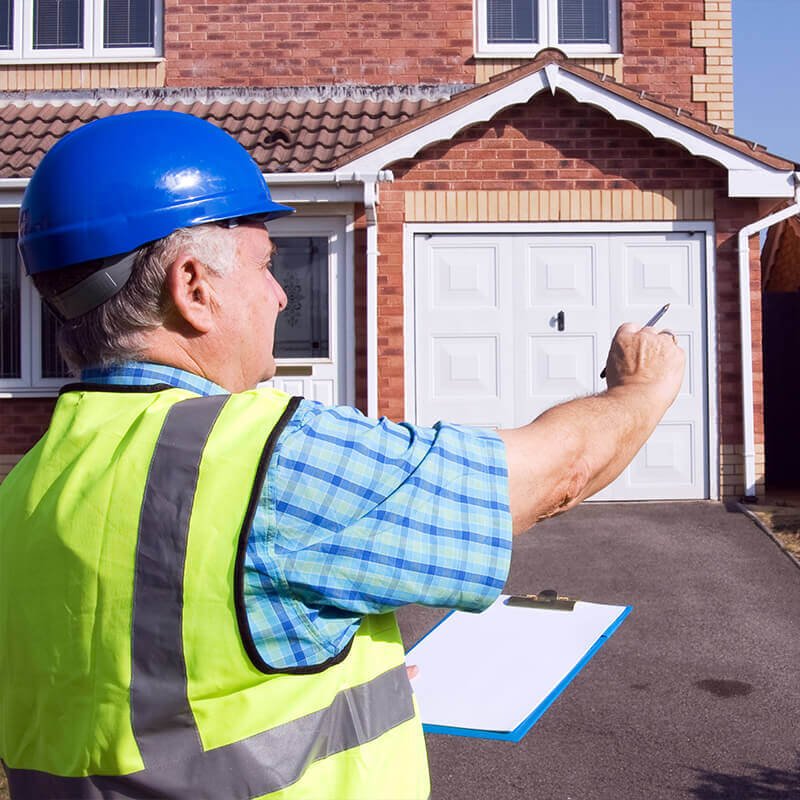- Home
- Damp Surveys
Conducting Damp Surveys in Canterbury, London, Bristol, Birmingham, Manchester, and Cardiff
When your house shows signs of moisture, the first thing to do is have a chartered building surveyor check for rising damp with a damp meter.
If the surveyor is unable to find the problem with the moisture, he or she may have to issue a damp report to determine whether the house has an unusual moisture problem or if you just happen to have a leaky plumbing system.
Most moisture problems in walls stem from either rising damp or poor drainage. Rising damp, the more serious problem, requires immediate action to stop the moisture’s upward movement and to remove any wall-mounted work or fixtures that may also be damp.
When it comes to treating rising damp, a specialised damp-proofing team is usually necessary. This team will conduct an assessment and then likely recommend one or several of the following remedial actions: putting in a course; chipping out and replacing an inadequate ground-floor damp-proof membrane while also replacing the ground-floor slab; or re-routing the plumbing to eliminate leaks and moisture entry.
Specialists usually back up their work with a 30-year guarantee.
Of course, problems caused by occupants could be improved with a little more attention to the problem. Ventilation and heating are the two sides of the moisture balance that the occupants can control.
Wood-boring beetles and other wood-infesting insects
Woodworm affects various woods and comes in different sizes, typically 3mm to 25mm.
The organisms eat and tunnel through the wood, leaving weakened wood in their wake. The treatment for woodworm, when they are present and accounted for, consists primarily of applying insecticides to the infected wood.
If the wood is so compromised that it loses its function, then the only real solution is to replace the infected timber with something more structurally sound.
Fungal Decay and Wood Rot
Fungus thrives in wet, damp, moist conditions. The right temperature plus the right moisture equals the right conditions for fungus to start growing.
When the moisture content rises over 20%, wood is prone to “dry rot.” A fine thread of gray fungus will grow through the wood and several other materials within the same area. Wet wood gradually changes into dry wood, and the changes are so extensive that what was once part of a solid structure can now be crumbled with a little bit of pressure.
Wood is considered to be “wet rot” if it has a humidity level above 30% to 50%. Wet rot can be identified by three characteristics: dark brown stain colours, longitudinal cracks, and splits. You are likely to see one of these features if you come across a piece of wood that has wet rot.
The first thing that happens when wood is diagnosed with having wet rot is that the source of moisture is identified and then stopped. Once that is done, it is usually necessary to then expose the rotting wood in a safe manner so that an assessment can be made of just how much the wood has rotted and what it will take to either replace or treat it to an acceptable safety standard.

Contact Us for a Damp & Timber Surveyor in Canterbury, London, Bristol, Birmingham, Manchester, or Cardiff.
If you think timber may be rotting because of woodworm or fungus, and you want a damp report on your home in Canterbury, London, Bristol, Birmingham, Manchester, or Cardiff, please get in touch with us. We’ll connect you with our panel of Chartered Surveyors.
Expert Witness Islington
We offer the services of a panel of seasoned surveyors experienced in disputes. Your expert witness surveyor will prepare a Part 35 compliant report in accordance with the Civil Procedure Rules (CPR).
Schedule of Condition
A schedule of condition reviews the condition of the property at the date a tenant moves in or before any construction takes place. For both landlord and tenant benefit, the Schedule of Condition protects against any dispute that might arise over the condition of a property. It provides a baseline to prove whether damage has occurred as a result of tenancy or nearby works (e.g. party wall).
Conditions that Necessitate a Roof Survey
A roof survey may be necessary if your property exhibits any of the following conditions:
Inside
- Streaks in wood: these suggest that mould is growing in the rafters because moisture is leaking through the roof.
- Sagging: if the roof is starting to bend, you may have serious structural support issues that will ordinarily require a new roof.
- Leaking water: this may be due to broken tiles or open joints in the lead flashing.
- Leaking light: If there is visible light entering the roof space, you may have a few holes or cracks in the roofing.
Outside
The following issues may necessitate roof repair or replacement:
- Damaged tiles: these may be cracked, slipped, or missing, and, if so, they will need to be fixed or replaced.
- Age: a roof more than 20 years old generally needs to be replaced.
- Moss and mould: these typically indicate moisture damage, which may compromise the roof.
- Gutters full of debris: if your gutters have pieces of roof tile or shingle in them these need clearing out.
- Ponding: if water on the roof isn’t draining away, there’s a good chance the roof isn’t functioning properly.
- Guttering coming loose: this can be a function of bad design or installation and may be affecting the ability of the roof to do its job.
- Loose flashing: this will need to be fixed if the roof is going to have any chance of remaining watertight.
Seeing undulations: if you see dips or bulges in the roof, or if you see your eaves sagging, you have a serious problem that requires immediate attention.




